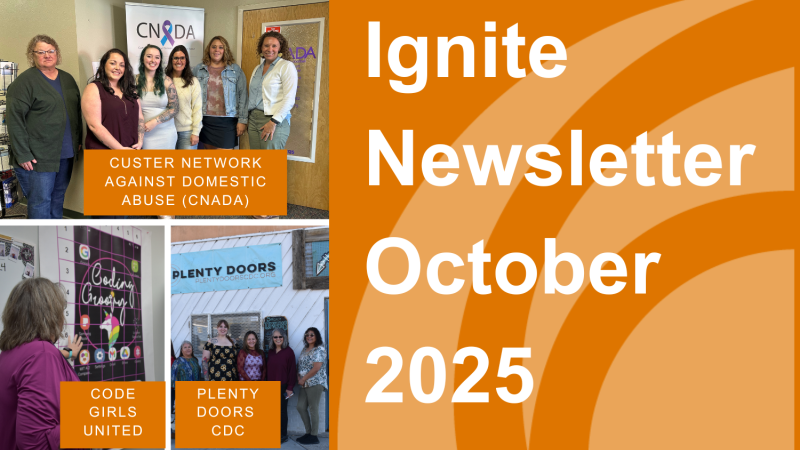In the Community
The Status of Women in Montana: Advancing Policy for Economic Equity
June 03, 2024
The Montana Budget and Policy Center (MBPC) produced The Status of Women in Montana; Advancing Policy for Economic Equity in the spring of 2024. The report provides a thorough analysis of the current state of women in Montana including economic opportunity, health and well-being, and political participation. The report also outlines opportunities present for Montanans to improve the status of women and advance gender equity.
The Women’s Foundation of Montana is proud to support Montana Budget and Policy Center in this work. Partners like MBPC play a pivotal role in advancing gender equity. Current and relevant data allows us all to clearly identify trends and issues, as well as challenges and barriers that hinder our progress toward economic equity. The Status of Women in Montana; Advancing Policy for Economic Equity serves as a foundational resource to empower communities across our state with the tools they need to tell their stories and focus their efforts in advocating for change.
Topline Findings:
Income and Wealth
- Overall women in Montana earn 71 cents for every dollar men earn. Black women in Montana earn just 49 cents for every dollar earned by a white man.
- Women must complete one additional degree to be paid the same as men with less education.
- Women have always possessed less wealth than men due to historical and current-day practices such as employment discrimination and a lack of access to credit. Families headed by Black women own just five cents for every dollar of median wealth families headed by white men hold.
- Women are more likely to work in careers focused on caregiving, historically undervalued and lower-paying occupations, like social work, child care, education, and nursing.
- Child care workers make low wages despite the value of their essential work. The reality of today’s child care profession has been shaped by decades of policies and public perception that devalued the role of caring for young children.
- Birthing parents tend to have lower earnings than comparable women without children. After having children, working women experience a permanent setback in their likelihood of working and a large temporary drop in earnings.
Labor Force Participation
- More than 71,000 children younger than six live in Montana, and 70 percent of these children have all parents in the workforce. Access to quality, affordable child care is essential for parents to participate in the workforce consistently.
- One in three (37%) Montana women who would like to work but are not in the labor force cite “caring for family” as a reason they stopped looking.
Business Ownership
- Women in Montana own businesses at a much lower rate than men, and this disparity is even more pronounced for people of color.
Health Care
- Following the passage of Medicaid expansion, health insurance coverage for women in Montana increased while the percentage of uninsured adult women under age 64 dropped from 14.9 percent in 2015 to 9.9 percent in 2016.
- Montana’s Constitution protects the right to abortion.
Statewide Policy Recommendations:
- Establish a statewide family and medical leave insurance program to support workers with caregiving needs and keep them attached to the workforce.
- Expand the Best Beginnings child care subsidy program to the federal maximum level, to support working parents afford child care.
- Invest in supports for child care workers, as a critical industry to support workers and businesses.
- Expand state investment in Tribal colleges.
- Congress and the state should expand successful cash supports, like the Child Tax Credit, to reach more parents living on lower incomes.
- Renew Medicaid expansion in 2025, to maintain critical coverage for Montana families.



